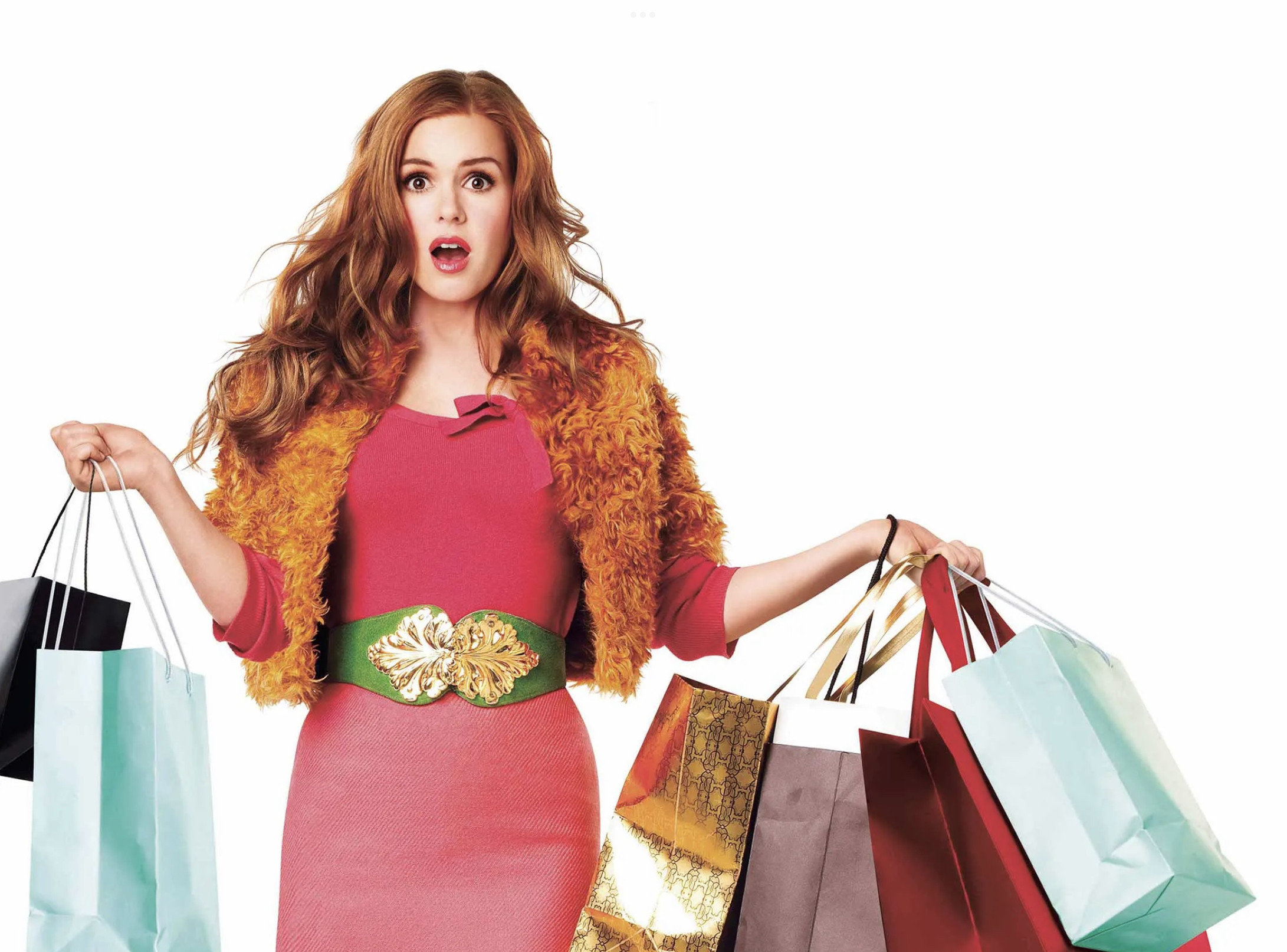

While these aren’t surefire ways to end out-of-control shopping habits, they’re a step in the right direction
"Hi, my name is (insert name), and I’m a shopaholic." The first step is admitting you have a problem, right? Every shopaholic – self confessed or not - has their wake-up call. Mine came in the form of a bank statement. There it was, staring up at me through a cracked phone screen: evidence of my love affair with retail therapy.
As a teenager, every weekend I would pop Confessions of a Shopaholic into my trusty Sony DVD player and listen to Rebecca Bloomwood describe how "When I shop, the world gets better, and then it's not anymore, and I have to do it again." And then the line that changed everything: "You know that thing, when you see someone cute and he smiles, and your heart feels like warm butter sliding down hot toast? Well, that's what it's like when I see a store. Only it's better.” Finally, someone who understood the euphoric feeling of clicking “add to cart” on the perfect pair of trainers, even if it meant surviving on instant noodles for the rest of the month.
The signs (ones I chose to ignore)
As a university student abroad, I was living on an allowance that was supposed to cover both food and "essential" items (spoiler: it didn’t). It’s safe to say, my financial priorities were a bit skewed. Who needs three square meals a day when you can have a fabulous wardrobe? My food allowance went straight into buying clothes, shoes, and accessories. Maybe if the cafeteria had a sale rack, I’d be more interested.
The day I checked into student accommodation was legendary. Most students arrived with a modest one or two suitcases. Not me. Oh no, I rolled up with three large suitcases, a tote bag and two cardboard boxes with a few random items precariously balanced on top. It was like a scene straight out of a comedy—everyone with their manageable luggage, and then me, a fashion junkie with her entire wardrobe in tow.
After moving out of my dorm and into a house with my aunt and uncle, I thought, "Great, more space!" But a bigger wardrobe, two outdoor sheds, and an attic only encouraged my shopping spree. More space means more clothes, right? My parents, realising I had no intention of curbing my addiction, resorted to drastic measures. They enlisted my aunt and uncle as secret agents to monitor my parcel deliveries. It turned into a stealth mission: Operation Sneak in the Shopping.
The epiphany
I was perfectly unbothered, living life in retail bliss until one fine morning I looked through my cramped, creaking closet and realised: I had nothing to wear. There were piles and piles of clothes within reach, but in my head, it looked like a whole bunch of nothing. A classic case of fashion paralysis. It was at that moment, I realised something had to change. So, like Becky Bloomwood in Confessions, I formulated the five-step plan that would (hopefully) transform me from a shopaholic to a save-aholic.
Step 1: The great closet purge
My room, measuring a grand total of four average-length strides, couldn’t handle the influx of new clothes. And just when I thought I couldn’t fit another piece in, I’d find a way. Tired of leaving it looking like the Tasmanian Devil came to visit every time I needed to find a specific top, I decided to tackle my closet. It was a hoard of impulse buys, items with tags still on, and clothes I’d worn once or not at all. After a lot of back and forth (throwing something out then digging through the trash only to lovingly place it back in the “keep” pile), I ended up donating five industrial sized rubbish bags full of clothes.
Step 2: Unsubscribing from temptation
My inbox was a minefield of promotional emails: “50% off!”, “Flash Sale!”, “Buy One Get One Free!” I had become Pavlov’s dog, salivating at the sight of a subject line promising discounts. The second step to becoming a save-aholic was unsubscribing from these emails. Sure, it felt liberating, but also left a void in my life. Becky would understand.
Step 3: Finding a distraction
In an attempt to fill the aforementioned void, I dabbled in various hobbies. Yoga? Too zen. Baking? Picked it up too quickly, started a business, decorated a wedding cake, then got bored. But then I found a new hobby. Pinteresting. Now instead of buying outfits I desperately want; I make Pinterest boards for them. Then I catalogue them (formal dinners, beachwear, autumn essentials, you get it). You’d be surprised how therapeutic it is.
Step 4: Accountability partners
Everyone needs a support system, and I found mine in my best friend, who, ironically, identifies as whatever the opposite of a shopaholic is. With a wardrobe that amounts to less than a quarter of mine, she claims she doesn’t like “owning things”. When she doesn’t have clothes left to get rid off, she resorts to decor. Every time I visit her, something's missing from her room. First, a candle disappeared; next, a bedside table. Heck, she even ditched a whole sofa once. But it's turned out great—I now consult her before any impulse buys, and her response is always: "Absolutely not."
Step 5: The capsule wardrobe
If you’re on TikTok or Instagram, you’ve probably heard whispers of this magical thing called a capsule wardrobe. The concept is simple: a limited collection of timeless pieces that can be mixed and matched to create countless outfits. It’s like fashion alchemy. I’ve tried it, and while it’s a noble idea, it’s hard to stop wanting to own every colour of that perfectly ruffled blouse.
Kicking the addiction isn't as easy as following these five steps; it’s more like stumbling through a maze blindfolded. In the meantime, I avoid shopping like it’s the plague. If I spot something I like, I walk away and give myself 24 hours to think about it. Do I really need ANOTHER denim skirt in ecru? When the urge to buy hits, I ask myself, "Do I already have something in this colour?" I most definitely do.
Have something to add to the story? Share it in the comments below.












